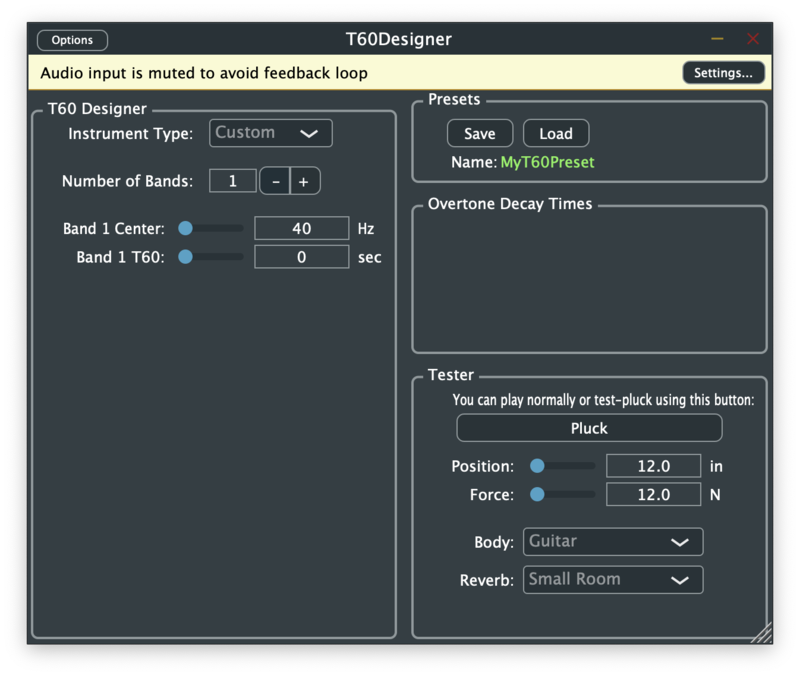Project-jos-320c-2021
From CCRMA Wiki
Contents
JOS 320C Project Goals
- Make my first "meta plugin" that writes out files for other plugins to read
- Learn how to make better GUIs for plugin Editors
Plan
- Look at some 220C projects for general orientation on project reporting
- Read ahead in the course schedule to learn about GUI options
- Decide on a file format: XML? Plain text? Encrypted?
- I am starting with plain text, and planning to include a hash string generated by a secret algorithm to detect modification if/when needed
- I am now reading all GUI-related JUCE tutorials that are new since I last looked
GUI Prototype
- JUCE GUI Editor used (very quick)
- Band-setting sliders will be programmatically laid out dynamically
- Configured for waveguide string loop filter
- Can also be used to design late reverb
T60 Designer Help
T60 Designer is an audio plugin that designs digital filters based on the desired decay-time in each frequency band.
Test Pluck Help
When T60 Designer is configured to design a "String Filter", then the "Tester" panel in the lower-right corner provides a Pluck button for hearing the sound of a plucked waveguide string using the loop-filter designed by T60 Designer. When you like what you hear, you can Save it out as a Preset that any compatible plugin can use.
Workflow Summary
- Throw together a first GUI using the JUCE GUI Editor (design step)
- Implement the plugin
- Recreate the GUI using Plugin GUI Magic
- Develop final image assets for a professional GUI appearance and drop them in
Decay time is specified by T60, which means "time in seconds to decay by 60 dB" (a term commonly used in reverb acoustics).
